#the logic of architecture design
Explore tagged Tumblr posts
Text

William J. Mitchell, The Logic of Architecture Design, Computation and Cognition, A Vocabulary of Stair Motifs (After Thiis Evensen, 1988)
#William J. Mitchell#stair#architecture#design#art#vocabulary#a vocabulary of stair motifs#the logic of architecture design#computation#cognition
738 notes
·
View notes
Text
Data Modelling Master Class-Series | Introduction -Topic 1
https://youtu.be/L1x_BM9wWdQ
#theDataChannel @thedatachannel @datamodelling
#data modeling#data#data architecture#data analytics#data quality#enterprise data management#enterprise data warehouse#the Data Channel#data design#data architect#entity relationship#ERDs#physical data model#logical data model#data governance
2 notes
·
View notes
Text
I'm about a couple months out from graduating with a degree in architecture and there are so many buildings are built Like That, especially "modern architecture" because the architect designed what they designed as a means to "ask and answer questions" but that question is never "how do i make a house livable" for people. There's so much thought about design and meaning and your vision but very little about shit like "how is this getting cleaned" or "is this a smart roof system to have in this climate" or, like the person above mentioned "is this a good climate to make a building that obsessively collects moisture".
But if you say "this sucks actually, why would anyone want this house, this is stupid" but you can't phrase it in a way that involves enough buzzwords, you sound like you just Don't Get It and people look at you and go "oh that's nice" and then start rambling about compression and release."
One field that badly needs to be purged of "Great Man-ism" is architecture.
#and i hate how everyone acts like im being quirky when i say that frank lloyd wright was good at making sculptures but sucked at buildings#“oh frank lloyd wright was a genius”#every house he made needed to have the roof replaced multiple times#and people just act like that's a part of the experience#bullshit#btw re that roommate#if you are making architecture that's not “designed for people” who the fuck is it for#i think the only logical explanation for “oh this isn't for people” is “I am an architect that specializes in animal enclosures”#if you architecture isn't for people it's either sculpture or an art installation#although sometimes it's not fully the architect's fault it's the client having a bad idea and getting to go with it bc they have the money#but with a lot of the award winning buildings they are 100% at fault and should be mocked
9K notes
·
View notes
Text
namesake mcmansion
Howdy folks! Today's McMansion is very special because a) we're returning to Maryland after a long time and b) because the street this McMansion is on is the same as my name. (It was not named after me.) Hence, it is my personal McMansion, which I guess is somewhat like when people used to by the name rights to stars even though it was pretty much a scam. (Shout out btw to my patron Andros who submitted this house to be roasted live on the McMansion Hell Patreon Livestream)

As far as namesake McMansions go, this one is pretty good in the sense that it is high up there on the ol' McMansion scale. Built in 2011, this psuedo-Georgian bad boy boasts 6 bedrooms and 9.5 baths, all totaling around 12,000 square feet. It'll run you 2.5 million which, safe to say, is exponentially larger than its namesake's net worth.

Now, 2011 was an anonymous year for home design, lingering in the dead period between the 2008 black hole and 2013 when the market started to actually, finally, steadily recover. As a result a lot of houses from this time basically look like 2000s McMansions but slightly less outrageous in order to quell recession-era shame.

I'm going to be so serious here and say that the crown molding in this room is a crime against architecture, a crime against what humankind is able to accomplish with mass produced millwork, and also a general affront to common sense. I hate it so much that the more I look at it the more angry I become and that's really not healthy for me so, moving on.

Actually, aside from the fake 2010s distressed polyester rug the rest of this room is literally, basically Windows 98 themed.

I feel like the era of massive, hefty sets of coordinated furniture are over. However, we're the one's actually missing out by not wanting this stuff because we will never see furniture made with real wood instead of various shades of MDF or particleboard ever again.

This is a top 10 on the scale of "least logical kitchen I've ever seen." It's as though the designers engineered this kitchen so that whoever's cooking has to take the most steps humanly possible.

Do you ever see a window configuration so obviously made up by window companies in the 1980s that you almost have to hand it to them? You're literally letting all that warmth from the fire just disappear. But whatever I guess it's fine since we basically just LARP fire now.

Feminism win because women's spaces are prioritized in a shared area or feminism loss because this is basically the bathroom vanity version of women be shopping? (It's the latter.)

I couldn't get to all of this house because there were literally over a hundred photos in the listing but there are so many spaces in here that are basically just half-empty voids, and if not that then actually, literally unfinished. It's giving recession. Anyway, now for the best part:

Not only is this the NBA Backrooms but it's also just a nonsensical basketball court. Tile floors? No lines? Just free balling in the void?
Oh, well I bet the rear exterior is totally normal.

Not to be all sincere about it but much like yours truly who has waited until the literal last second to post this McMansion, this house really is the epitome of hubris all around. Except the house's hubris is specific to this moment in time, a time when gas was like $2/gallon. It's climate hubris. It's a testimony to just how much energy the top 1% of income earners make compared to the rest of us. I have a single window unit. This house has four air conditioning condensers. That's before we get to the monoculture, pesticide-dependent lawn or the three car garage or the asphalt driveway or the roof that'll cost almost as much as the house to replace. We really did think it would all be endless. Oops.
If you like this post and want more like it, support McMansion Hell on Patreon for as little as $1/month for access to great bonus content including a discord server, extra posts, and livestreams.
Not into recurring payments? Try the tip jar! Student loans just started back up!
#architecture#design#mcmansion#mcmansions#ugly houses#interior design#mcmansion hell#bad architecture#2010s#maryland
6K notes
·
View notes
Photo

アールデコ解説|LOGIC
「LOGIC」のメールマガジンで連載中の、アートトピックの解説コラム。第9回はアールデコについて。
0 notes
Note
I physically need to read a fic with a sober reader who witnesses how goofy Kaveh and Veritas can get when they're drunk and is just shocked that they're capable of being THIS playful and unhinged. Bonus if the reader records them and teases them about it later on.
Under the Influence
Summary: When Kaveh and Ratio drink a bit too much, their usually serious and refined personas melt away, revealing a goofy, playful side that shocks their sober partner. As Kaveh balances wine glasses on his head and Ratio narrates absurdly dramatic tales, you capture the hilarity on video and tease them about their drunken antics later. What begins as a drunken display of silliness turns into a heartwarming moment where the two intellectuals let go of their usual restraint and embrace their more carefree sides.
Tags: Kaveh x Reader x Ratio, Fluff, Humor, Drunken Shenanigans, Teasing, Playful Dynamics, Sober Reader, Lighthearted Banter.
Warnings: Alcohol consumption, Light swearing, Mild inebriation and the silliness that follows.
[Part 2]

You had always known Kaveh as the passionate architect, the one who threw himself into his work without a second thought. His sharp eyes were usually filled with intensity, whether he was sketching out blueprints or discussing the intricacies of his designs with a fervor that could be described as borderline obsessive. On the other hand, Dr. Veritas Ratio, or as he liked to be called, Dr. Ratio, was known for his unmatched intellect, his sharp wit, and his imposing presence as a scholar of the highest order. He was always calm, calculated, and logical in everything he did.
But tonight, everything had changed.
The three of you—Kaveh, Ratio, and yourself—had been winding down after a particularly long day. A few drinks were shared, mostly to calm the nerves after a heated debate between Kaveh and Ratio about the nature of beauty versus logic in architecture. You had opted for a glass of water, wanting to stay sober for the evening.
The first drink had seemed harmless enough, then the second, and soon enough, the two of them were... well, a different version of themselves.
Kaveh, normally an epitome of elegance, was now sprawled across the couch, his arms flailing about as he attempted to convey the complexity of his latest architectural vision with a drunk logic all his own. Ratio, on the other hand, had started laughing—genuinely laughing—a sound that was so foreign coming from him, you almost couldn’t believe it.
You stood nearby, observing the scene with a combination of disbelief and amusement. Kaveh was currently trying to balance a glass of wine on his head, apparently convinced that this would somehow make him look more refined.
“Look, look!” Kaveh slurred, gesturing grandly with his arms. “An architect is a true artist, right? And art is about balance! And this, my dear Ratio, is balance!” He gave a triumphant grin, the glass teetering dangerously on his head as he struck a dramatic pose.
Ratio, who had been sitting in a more reserved manner just moments ago, now seemed to have completely let go of his usual composure. He was clutching his sides, laughing harder than you had ever seen him laugh in all the time you had known him.
“I never thought I'd see the day when Kaveh, the ‘Master of Aesthetics,’ would be reduced to a—what did you call it?—a ‘drunken genius’ in his own right!” Ratio managed to say between bursts of laughter, his voice unusually high-pitched in his state.
Kaveh, however, wasn’t finished yet. With an exaggerated gesture, he began to dramatically “sing” an operatic rendition of what was undoubtedly the most nonsensical and off-key song you had ever heard. You couldn’t help but snicker as he added hand movements for extra flair.
“You should definitely get a recording of this,” Ratio said, wiping away tears from the corner of his eyes. “This is legendary, and no one would believe it if you told them.”
Your eyebrows shot up in realization. A mischievous smile crept onto your face as you reached for your phone. You had to document this moment—it was too precious to be forgotten.
As you pressed record, the two men’s antics continued, utterly unhinged. Kaveh was now rolling on the floor, pretending to be a cat in an exaggerated display of theatrical nonsense, while Ratio began narrating an imaginary tale of "the drunken architect and the scholarly fool" in a deep, overly dramatic voice that sounded like he was auditioning for an epic movie role.
“Once upon a time, there was a brilliant architect,” Ratio began, sounding almost serious, “who sought to balance the world with a glass of wine on his head. But lo and behold! His genius was thwarted by a foolish scholar who...”
“Hey!” Kaveh interrupted, still lying on the floor but with a playful pout on his face, “I’m not a fool! I’m an artist, Ratio! A true visionary!”
You couldn’t help but giggle at the absurdity of it all. Your phone’s camera captured every moment—the dramatic poses, the ridiculous banter, and Kaveh’s insistence that he was both an architect and a revolutionary philosopher in the same breath. Ratio’s narrative voice only made it all the more surreal.
“And as the great architect’s impossible balance failed,” Ratio continued, “he lost his grace and fell into the arms of a drunken fool who had, ironically, become a greater scholar in his drunken stupor than he ever was sober.” He paused and gave you a wink as if he knew exactly what you were thinking. “Should I start charging for this performance?”
“Oh, stop it, you,” Kaveh protested, his voice slurred but still full of mock indignation. “You’re just jealous because my artistic flair is more... refined than your boring lectures.”
That was it. You burst out laughing, clutching your phone in one hand as you tried to contain yourself. The two men had completely abandoned any sense of dignity, and you were witnessing a side of them you’d never expected—Kaveh, who prided himself on being a refined, somewhat dramatic figure, and Ratio, usually so stoic and controlled, both completely unhinged in a drunken stupor.
You stopped recording for a moment, both of them still lost in their own silly world.
“You both are ridiculous,” you teased, still chuckling. “I can’t believe I’m seeing this side of you.”
Kaveh shot you a grin, his earlier dignity long gone. “Oh, you better believe it. You’ve unlocked the true genius of Kaveh and Ratio!”
“Geniuses,” Ratio echoed with a wry smile, his head still spinning slightly from the wine. “I have never met two people more qualified to—”
“—make fools of ourselves?” Kaveh interrupted, finishing Ratio’s sentence with a dramatic flair.
“Exactly!” Ratio said, as if this was the revelation of the century. He staggered slightly and straightened himself up, clearly attempting to reclaim some of his usual poise. “You have to admit, we are rather amusing when not bound by the chains of intellectual superiority.”
You couldn’t hold back your laughter. You pointed your phone back at them, capturing the absurdity of the moment. “This is gold. I’m going to make sure everyone hears about ‘Drunken Genius Kaveh’ and ‘Scholar Ratio’ forever.”
At that, Kaveh made a playful, exaggerated bow from the floor. “As long as I’m remembered for my art, I have no complaints!”
Ratio, still swaying slightly, joined in, offering an over-the-top, formal bow that had you in stitches. “Indeed. May our genius be immortalized, even if it’s through the lens of... let’s say, questionable decisions.”
You laughed again, feeling a warmth in your chest at the sight of these two intellectuals, usually so serious, embracing the chaos of the moment. It was clear that beneath all the genius and the hard exterior, they had their own quirks, their own human sides—unfiltered, unrefined, and entirely lovable.
Before you could stop yourself, you playfully raised your phone and said, “So, are we getting this on record? Or should I keep the next few minutes a secret?”
“Oh, no,” Kaveh interjected, suddenly sitting up, “absolutely not. This is an exclusive performance!”
Ratio smirked. “Right. And we’re expecting royalties for that footage.”
You grinned, shaking your head. “We’ll see about that.”

#x reader#honkai star rail#hsr#honkai star rail x reader#hsr x reader#kaveh x reader#kaveh genshin impact#kaveh genshin#genshin impact kaveh#genshin kaveh#kaveh#hsr dr ratio#hsr ratio#ratio x reader#dr ratio#veritas x reader#veritas#veritas ratio#fluff#humor#drunken shenanigans#teasing#playful dynamic#sober reader#lighthearted banter#kaveh x reader x ratio#kaveh x you#poly relationship
162 notes
·
View notes
Text


I don't understand the remodel logic behind this 1899 mansion in Boston, MA. It's an architectural masterpiece, and they did preserve &/or restore some of the magnificent features, but then, they went totally modern in other places, and for this kind of money, I don't appreciate their taste. 23bds, 12ba, 14,256 sq ft, $11.5m.


The entrance has this magnificent dome and sitting area. I didn't expect anything like this.


Original marble fireplace and wainscoting. It looks like the lobby of a theater. I don't care for the decor or the color of the walls- I think it calls for some fine wallpaper or something to make it look like the spectacular space it is. Look up at the ceiling and see the architecture of the stairs.

Can you imagine coming home to this?

This is all original marble.

The large sitting room. They brightened it up, but painting all the woodwork flat white obscures the details, especially on the ceiling.


I can barely make out the carvings on the panels under the crown molding.

Intricate design on curved glass.

Then, after you see all of the original architecture, you come to the new kitchen/family room. I don't know, maybe it's a bar. The same architectural features are there, also obscured by white paint, but what's up with that cabinetry? They took an original room and plopped this ugly modern furniture in it.

I would like this dining room if it was in a modern home, but not here. Looks like they redid the fireplace. It couldn't have been that plain, originally.

Here's a nice balcony sitting area, but the color of the wood is off. Either it's been lightened or replaced.

The original stained glass skylight is still intact.


They didn't touch this room. Look at the gorgeous fireplace. Wow, it's amazing. Something tells me that they added those ugly ceiling tiles and the box thing, though.


Luckily, y didn't paint the wood in this room white, and you can see the details. Lovely curved stained glass windows.

See what I mean about the stairs? Those railings can't be original. This looks like a totally different house.

Here they've modernized a pool room. New fireplace, modern mural effect on the windows. Don't care for the fixture over the pool table, either.

This bedroom has a door to a terrace. It also has a new fireplace and floor.


I'm surprised that they didn't mess this gorgeous feature up.

The exterior of the building has wonderful mosaics.

Lovely balcony out front.

Nice park nearby.
https://www.zillow.com/homedetails/395-Commonwealth-Ave-Boston-MA-02215/2060712391_zpid/?
130 notes
·
View notes
Note
Hi caro 🌹 I saw in your hyunjin kibbe post( which I loved brw) that you mentioned some luxury brands and their go to kibbe types . I was wondering what kind of brands would best suit pure romantic? There is so little about the subject of pure R s sadly . Have a nice day ❤
KIBBE'S PURE ROMANTIC IN FASHION & HISTORY (+ even architecture)
R is the opposite of the tall, non-curve dominant dramatic and flamboyant natural model body types, which is why it SEEMS juxtaposed to haute couture on paper, as if people thought:
"romantic = gentle flowing style of bygone eras on a small figure 8 body = not fashion just a past reference,
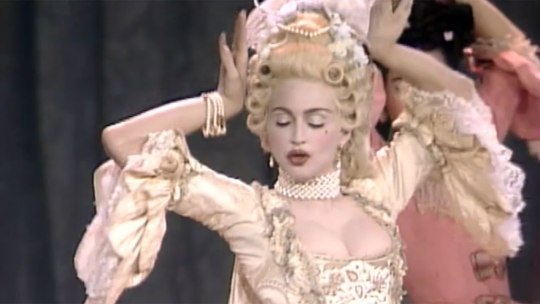
dramatic = severe modernity with ultra sharp lines on a statuesque body = yep, that's forward modern fashion for the runway".

...even if the opposite is easily true (e.g. damiano david often dressing fashionably romantic)!

and the strawberry R dress causing a real fashion ruckus.
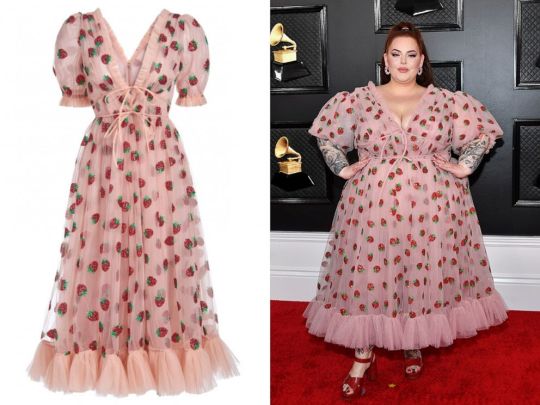
sure, that polar opposite logic isn't 100% erroneous. dressing tall models in R will often feel retrospective and damiano is SD-ish so he can do both; plus yin garments are too cinched & short for 6'0+ models as no vertical is accommodated.
there's a reason why the 50s are THE romatic (+ SC) era, as is baroque, R feeling almost confined to these periods.


however, many brands actually do design innovative yin lines! romantic equals luxury, excess & abundance (= upper class), ornamentation and glamour itself, as kibbe wrote, after all. a dramatic body type does not exude abundance and ornamental detail at all.
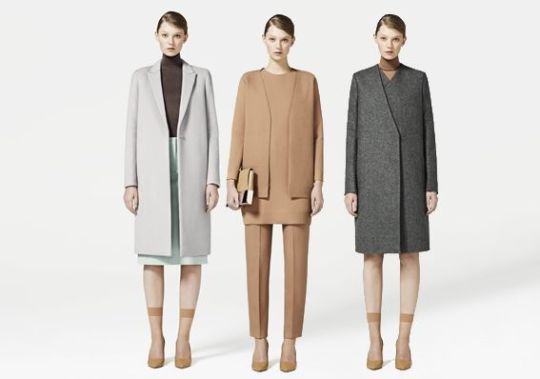
(even if such garments can cost hundreds and it could be difficult to craft and accurately sew!)
D is spartan, brutalist, geometric, NOT copious. which is ironic and deceptive for a luxury brand, supposedly the opposite of austere and simple! wealth whispers would be a classic type motto. but money on display is always R, always redundant, almost always past-oriented, and once again ironically very feminine-coded even if wealth is and was mostly in men's hands worldwide.


as a pompous, infuriating and exaggerated example, look at the german castle neuschwanstein of bavarian king ludwig above, or (jump scare) mar-a-lago's wasteful wannabe versailles-style interiors below.
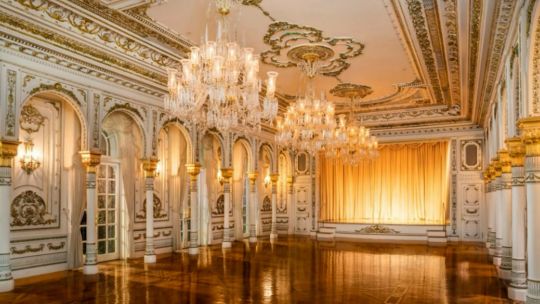
insanity how this can exist. note how "princess"-like it all is, the inverse of masculine, hard, dark, angular, strong yang. showing material affluence is confusingly yin? 😅 as if, a guy is so rich, he can quite literally afford to display femininity in his interiors. nothing about this alludes to D, FN, SD.

you wouldn't guess a guy like trump lives there. soft fabrics, candles, florals, ruffles, lace, pastels... everything we associate with hyperfemininity and the romantic type: the inverse of donald who is a flamboyant natural (tall + width), men's 'chad/archetype' of our time — paired with the SD trend — and fashion's towering ideal body ever since the 90s (claudia, gigi, candice, naomi, adriana etc, and all male models ever, like tyson beckford).

quite a political and aesthetic paradox, the world upside down. maybe - on top of trump dressing business pure classic, i.e. far off his type - that's why he looks out of place, as if you photoshopped it in.

PS: the stereotypical villain's castle in fiction is almost always gloomy and pure dramatic, immediately signalling its intent without hiding. (minas morgul in lotr, maleficent in disney)

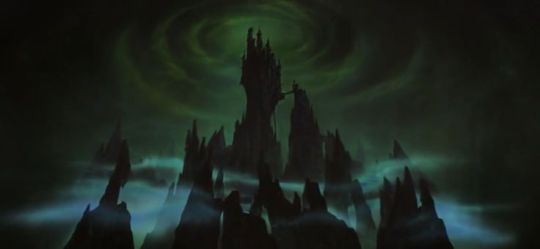
talk about excess, anyway, and that's where i answer the question: the notoriously well-off catholic church is very SD/R in its aesthetic, too, similar to european aristocracy. that's probably why many italian fashion houses love a yin branding. rounded yin is catholic (st mark's basilica, venice). italy idolizes the yin body type.


^look how dolce & gabbana draws from this to make it TR. that's why i include architecture in this post. it intertwines.
if you look at many historic arabic garments/buildings or especially dynastic china, too, pure R is also prominent in noble dress and art. if you want to study the romantic type, study ottoman and chinese (fashion) culture. even the men wear waist emphasis, decorative fabric, dresses/skirts, rounded head gears and fine jewels.

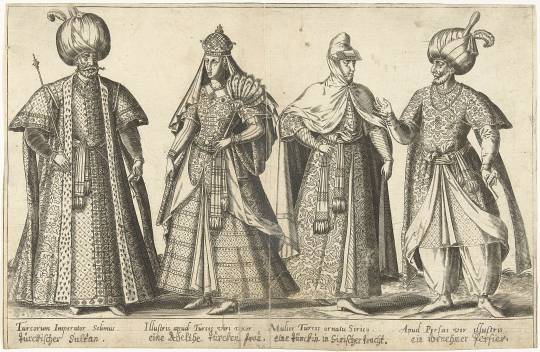
all of this heavily influences luxury today, which is why i took some time diving into history.
so, finally: ROMANTIC BRANDS!
as mentioned, versace is very ornamental yin overall, even the logo. no sharp D lines to be seen. they do several kibbe types, but R is a huge focus.
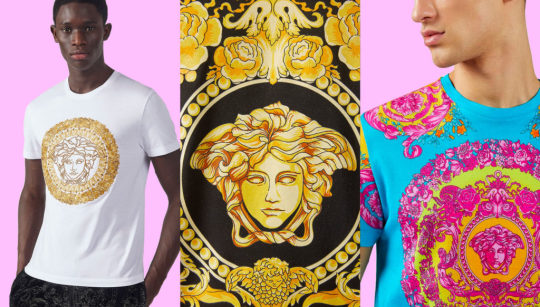
dolce & gabbana is always between TR, SD, and pure R. chungha being soft gamine fits the brand. she always wears R and TR. this brand is the most yin in europe, IMO.



guo pei, the most wonderful and well-crafted of all. such details, pure R eye candy. my favorite. it's no surprise they successfully dressed rihanna (SD). guo pei is a genius. everything she does is yin.

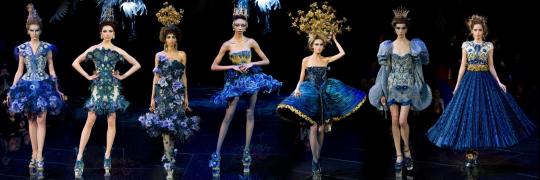

she is one of the few designers who shares her own essence with her clothing creations. guo is also very yin.
robert wun is always going tumblr viral. those light reflective fabrics. it's the darker side of romantic, not soft and sweet. still, draped and translucent, only sometimes SD and TR. i think robert is the frontier to make romantic lines modern and gender-neutral. so good.


smaller/lesser-known/less pricey R brands:
innika choo
chi chi london
confete
loveshackfancy
sir the label
morning lavender
revolve
icy city co
jessa kae
shopbop
doen
steele
lacemade
chicwish
for love and lemons
miss patina
hope this helped! thank you for reading and sending such an interesting question.
#kibbe body types#kibbe#cub mail 🐅#ask#fashion#robert wun#versace#dolce & gabbana#guo pei#italy#china
89 notes
·
View notes
Text
"They know."
The entanglement between Will Graham and Hannibal Lecter is one fraught with manipulation, empathy, and a gradual dissolution of moral boundaries. Among the many manifestations of this dynamic, few are as structurally and thematically potent as the phone calls between Hannibal and Garret Jacob Hobbs in Aperitif, and Will to Hannibal in Mizumono. Although temporally and circumstantially disparate, these moments are deliberately interwoven, functioning as temporal markers in the evolving narrative of their mutual ensnarement. By examining the layered substrata embedded within these interactions, we discern the cyclical nature of influence and manipulation that constitutes the linchpin of Hannibal’s ontology: wherein power is neither imposed nor seized, but transacted—an unspoken recognition of each other’s latent capacities for violence, empathy, and control.
In order to grasp the profundity of both circumstances, there must be an understanding of the motivations that precipitated them. Hannibal’s call to Garret Jacob Hobbs, though executed with pragmatic brevity, belies a far more intricate set of intentions than initially suggested. At this stage in the narrative, the dynamic between Hannibal and Will is embryonic, subsisting on clinical curiosity—a regimen of dispassion Hannibal had grown accustomed to maintaining within the structure of his professional life. However, Will’s exceptional capacity for empathy was an anomalous force disrupting the measured architecture of Hannibal’s world, compelling him to consider avenues of a far more intimate nature. He saw in Will not merely a mind of peculiar brilliance, but a mirror—a potential companion. A conception potent enough to stir the abyssal ache of loneliness lurking beneath his polished exterior. This metaphysical hunger did not seek communion through the banalities of camaraderie, but the language with which he is most conversant: brutality. Crucially, this longing is filtered through Hannibal’s inability to engage with intimacy in any customary sense. Those loved by Hannibal are transformed, Abigail, Will, and even Alana endured respective reshapings under his hand. Love, as he conceives it, is not an act of gentle affection, but of sacramental violence—of devouring, refining, and rebirthing.


The phrase, "They know," offered under the pretense of courtesy, serves not Garret Jacob Hobbs, but Hannibal’s design. Affording Hobbs all the information necessary to ensure that his reckoning would be one of ferity, Hannibal sets the stage for the inciting act of Will’s initiation. Merely witnessing atrocity was insufficient—Will, no stranger to bloodshed, had to be implicated in its logic for the grimmer recesses of his psyche to resurface. The murder committed in the wake of the call is not merely an act of violence but a rite of passage—a trial by blood marking Will’s induction into the realm of existential violence Hannibal inhabits.
By the second season, the perilous symbiosis between Will and Hannibal has undergone an irrevocable shift, with Will now occupying a position of greater understanding and, to some extent, complicity. No longer a nescient pawn in Hannibal’s artifice, Will found himself reshaped by betrayal, incarceration, and the slow insidious seep of Hannibal’s influence—beholding his former confidant with tragic appreciation. What was once a relationship predicated on deception and power now throbs with an unsettling intimacy, of knowing and being known in a way that strips pretense to the bone, heedless of the ruin it invites. And so, as the loom of Hannibal’s retribution tightens its threads, Will acts in yet another betrayal of his espoused ethics, warning Hannibal with the very words that heralded his undoing: “They know.”


These mirrored phone calls do more than establish a warped parity; they elevate betrayal into an act of profane devotion. Superficially, the phone call suggests mutual recognition, a begrudging respect of each other’s prowess, their intellects so utterly interwoven that opposition and alignment have become indistinguishable. Yet, beneath this veneer of mutual acknowledgment roils an emotional undercurrent of unbearable complexity. Will’s call is not a simple warning—it is a moment of existential confirmation. Betrayal, in its conventional sense, implies a sundering. Though, in the case of Will Graham and Hannibal Lecter, betrayal is the mechanism that binds them. The call provides more than just a warning, it’s a gesture of terrible, inexorable recognition. Granting Hannibal something far more ruinous than treachery: understanding.
There is an aching irony in Will’s final call, a cruel paradox woven into the fabric of their bond. He, who has been both victim and agent of Hannibal’s machinations, now mirrors his adversary so exactly that the distinction between captor and captive collapses into irrelevance. In this fleeting moment, Will is not simply playing a part in the narrative Hannibal has orchestrated; he becomes its co-author. His warning is an unspoken confession, a testament to their enmeshment. Whatever semblance of love remains between them has been flayed to its barest form, pulsing with raw, excruciating knowing. Similar to the ouroboros, they are both devourer and devoured, their betrayals spiraling into one another in an endless recursion of destruction and genesis. There is no resolution, no terminus to their dance—only the certainty that in wounding one another, they are made whole, bound ever tighter in the embrace of ruin.
57 notes
·
View notes
Text
the watcher is a great dlc, but the ending left me rather confused and dismayed. Seeing a city with the benefactors still alive is certainly thrilling, and very exciting for anyone who likes the lore and theories. Theres just one problem. The benefactors are too big!
even if most of the areas of rain world are little ducts no one was meant to enter, the fact that there is very few rooms that they could actually fit into in their own iterators and cities is a bit odd, isn't it? even with self repairing machines you should design it so you can go in and repair stuff if needed, and not being able to navigate any part of your world in general seems like an extremely unpleasant way to build anything
so here is my theory:
the echo we follow around the whole time seems to be some sort of child, this is evidenced by the way they talk and their room. I think the city we explore at the end is not actually the real size of anything, but rather how a child might see everything. After all, when you're a kid everything seems so towering and huge. (the slugcat, being smaller than them, is of course minuscule)

my main proof of this is the hallway to the void baths. if the ancients were truly as big as they seem to be in the shop, they could never fit into that hallway, which is a serious design flaw for such an important room. I believe this to be because the echo recalls the void baths far more clearly, as it was the last thing they saw before ascension, so its more accurate to the real size they might have been.


a bonus bit of evidence is just how nonsensical the background city is on the bridge. most of rain world has obscure and strange architecture, but it all has internal logic and at least looks nice. So why then is the city made of strange grey squares and giant airconditioning units? that doesn't seem like very sensical building to me. I believe this is because its a memory, and the detail of what the actual city looked like was lost, replaced with strange fragments stuck together into the shape of a city

so to sum it all up, i believe the perspective of the benefactors we see in this region is warped by the echos distorted memories, and not a true representation of how everything looked.
That being said, the glimpse we see into the benefactors lives is very interesting and rich, and probably even mostly reliable, so dont take this as saying you cant acknowledge it at all!
#Rain world#Rain world watcher#Rain world watcher spoilers#Rw watcher#Rw watcher spoilers#Watcher#Watcher spoilers#I hope this doesnt get past anyone who didnt want spoilers tags somehow!
38 notes
·
View notes
Text
On Recoleta's design
Reverse 1999 2.6 spoilers for the PV and my speculations for Recoleta's narrative
As a R1999 Recoleta fictive, my friends have brought it to my attention that there's a very loud minority of fans who've spurted less than kind words about my design due to its "blandness". I feel the need to give myself some grace and share my opinions on why my outfit perfectly serves its purpose in the narrative. (Moving forward, I will refer to my source in third person.)
Recoleta's simplistic design is thematically relevant to her role in Folie et Déraison (Madness and Civilization) as an outsider venturing into Comala – the "Panopticon Beyond Reason." Unlike the prisoners, who are absorbed into the institution’s constructed logic, her vibrant color scheme marks her as a figure unassimilated by the system, which stands out in stark contrast with Aleph who embodies the prison’s ideological framework. Aleph’s name, drawn from Borges’ The Aleph, symbolizes an all-encompassing perception (The Aleph refers to a point in infinite space that contains all other points, allowing someone to see everything at once), a concept akin to the rationalist gaze that psychiatry imposed upon madness, defining and regulating it rather than seeking to understand it. Meanwhile, Recoleta’s Chinese name (虚构集) from Borges’ Ficciones, suggests an awareness of constructed realities, which mirrors Foucault’s argument that madness is a concept rewritten through history to serve power structures. The PV’s line "fiction and reality are two parts of a whole" echoes this divide – Aleph = institutional reason, while Recoleta = disruption. The visual language of the PV – spiraling distortions, shifting architecture, and fragmented perceptions – also evokes the historical experience of madness within the confines of asylums, spaces that were designed not to heal but to surveil and discipline. They need a beacon of hope and questioning to look toward, which brings me to my next point.
Recoleta’s design is also inspired from Saint Martin of Tours, particularly the imagery of him cutting his cloak to share with a beggar. It's an act of rupture – how Foucault describes moments when compassion disrupts strict reason's narrative. Similar to Saint Martin who shared his reality with the marginalized, Recoleta's role may be to introduce an alternative to the construction of madness within what Foucault describes as Great Confinement, where the mind is made a prison through discourse.
Comala is a model of discipline whose inmates internalize their subjugation, not unlike how psychiatric institutions functioned to suppress the mad rather than converse with them. But Recoleta is a writer who engages with her audience – she dons an adventurer attire as her "reality" that is shaped by "fiction" (Ficciones), whose "fiction" in turn influences "reality" (The Aleph).
We are trapped in a predetermined ending – unless, of course, someone dares to rewrite the story.
#recoleta#ficciones#character analysis#reverse 1999#madness and civilization#folie et deraison#recoleta signing off#i need to post about reverse 1999 more on here if only school allows me more time to pour my heart out coherently
46 notes
·
View notes
Text

William J. Mitchell, The Logic of Architecture Design, Computation and Cognition, Symmetrical harmonic proportions for rooms as recommended by Palladio
#art#design#William J. Mitchell#the logic of architecture design#computation and cognition#harmonic proportions#rooms#palladio
72 notes
·
View notes
Text
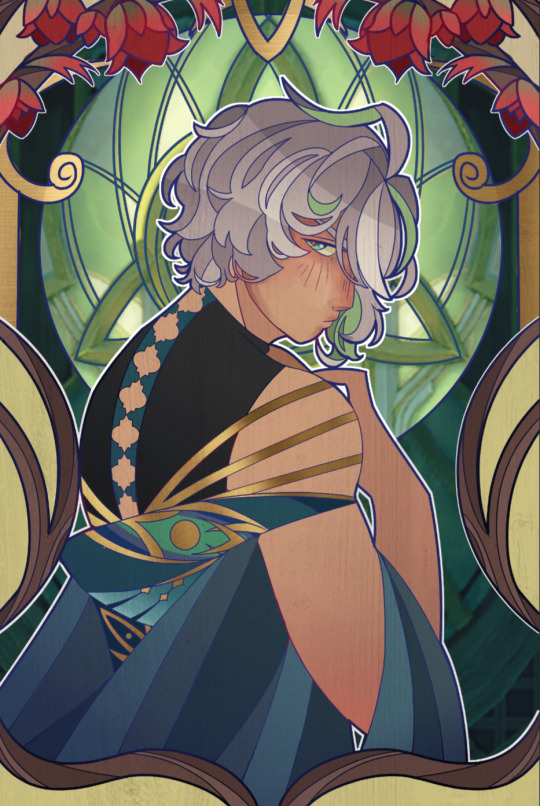
Alhaitham in an Art Nouveau inspired style Here's a thread I wrote about this concept on Twitter, below the cut will be a copy of the text, sorry if it takes a weird format on tumblr since it was initially written as a twt thread
This might not make a lot of sense to some of you but before i talk about Alhaitham and Art Nouveau i'd like to talk about Kaveh and Romanticism The connection between Kaveh and Romanticism can be more easily done, specially with characters such as Faruzan calling him a romantic

The Romantic movement, as the name suggest, is very emotionally driven. Its a movement that values individualism ane subjectvism, it's objective is on evoking an emotional response, most comonly being feelings of sympathy, awe, fear, dread and wonder in relation to the world
Basically the artistic view of the Romantic is to represent the world while trying to say "we are hopeless in the grand scheme of things, little can we do to change the world yet the world is always changing us"
In Romantic pieces the man is always small compared to the setting they find themselves in, see the painting Wanderer Above the Sea of Fog by Caspar David Friedrich as an example, the human figure is central but relativelly insignificant to the world

Another thing about Romanticism is the importance of beauty, it's through it that the Romantic seeks to get in touch with their emotions and ituition and its through these lenses that they see the world. The Kaveh comparison should be easy to make with these descriptions
Kaveh's idle chat "The ability to ability to appreciat beauty is an important virtue" just cements to me the idea that his romanticism is closely connected to the artistic movement. He does have an argument agaisnt this connection but I'll bring it up later on the thread
Now that I used the opportunity to talk about my favorite character in a thread that wasn't supposed to be about him let's go back to Alhaitham and how to connect him to the Art Nouveau movement
But seriously, I brought up Kaveh's more obvious connection to Romanticism because the Nouveau movement was created as a direct mirrored response to the Romantic movement, and we all know how we feel about mirrored themes between these two characters
Art Nouveau is about rationality and logic, the movement was used more comonly on mass produced interior design pieces or architectural buildings, it's a movement much more focused on functionality than on art appreciation
They also had a big focus on the natural world but in a very different way, while Romantics saw nature as a power they couldnt contend with, artists from the Nouveau used the natural as an universal symbolical theme for broad mass appeal
Flowers, leaves, branches, complexes and organic shapes are the basis of this style, the logical side of it coming from the mathematics needed to create these shapes and themes in ways that were appealing and also structurally sound
To appreciate the Art Nouveau style is to understand it is a calculated artistic movement (another reason to be salty about an AI generated image trying to emulate it) In short, this style is less about the art and more about the rationality in the mathematics to make it
Another note I'd like to point out is that I love how both Alhaitham and Kaveh have dendro visions while both movements are so nature centric in different ways, Romanticism seeing it as a subjective power and Art Nouveau seeing it as recognizeable symbols
I mentioned an argument against the Kaveh comparison before: the one thing that bothers me about Romanticism is how negative it is in relation to humanity's position in the world and how that related back to Kaveh
In the Parade of Providence it was explicitely showed how much Kaveh dislikes the idea of people seeing themselves as helpless in relation to the problems of the world
People may suffer but there is something he can do to help them and he will do it
It doesn't feel right for me to say that Kaveh fits the Romantic themes because of his suffering, in a similar sense it also doesn't feel right to me to say Alhaitham fits Art Nouveau because of his rational behaviour while he as a character is a lot more complex than that
This thread was done all in fun and love for an artistic discussion, it's not a perfect argument to connect these characters and movements
+ I haven't studied art history in a year, if anyone knows more about these movements please tell me I love learning new things
++ Really sorry if my english is bad or I sound repetitive, it's not my first language and im trying my best here
Thanks for reading
I love you, have a nice day/evening/night
#my art#genshin impact#alhaitham#al haitham#i'll also tag#kaveh#because of the text#anyways uhm#in short i saw an ai generated image claiming to be alhaitham in an art nouveau style#because of that i felt the urge to not only redraw it so there was a human made piece resembling it#but also to erm actually it in general#it activated my art history autism so i had to
114 notes
·
View notes
Note
I know that Inkling societies mirror human ones because of plot reasons going back to Alterna, but I've really enjoyed seeing your 'convergent evolution' takes on the biology, so why not apply that same logic to something like, say, architecture? At a glance, sure, Inkopolis and the Splatlands look recognizable to us, but would for instance an inkling or octoling's home have a layout differently built for their unique needs and behavior?
Thank you! also yes this is a good point! I've been avoiding doing anything too outlandish with the architecture or much of any of the worldbuilding to be honest because we know very little about Splatoon architecture and... well, stuff like this, to begin with. And it's harder to try and change major things about the world itself than it is to work with alternative biology for a creature in my opinion; all we really know when it comes to architecture and city- and building design in Splatoon that it is very similar to those of humans, and a lot of the elements are based on modern day Japan. I doubt the developers are doing that much to differentiate the architecture from human buildings and stuff because granted it would be a ridiculous amount of thoughts and work to sculpt a society and buildings that accommodate like 500 different species MINIMUM.... there's some little things here and there, like the Giant Doorways in the Deepsea Metro, but then there's other things like the freaking escalator in Inkopolis Plaza that's literally the width of maybe 1 Inkling and no other species even fits in that. Hell, it's not even the width of TWO PEOPLE which is at least expected of escalators to my knowledge--- anyway....
my point being I don't like to make sweeping differences to human architecture when it comes to Splatoon, because whether I like it or not a LOT of their stuff is just human architecture a little bit to the left. But that doesn't mean you can't make any changes to it, and it also doesn't mean there aren't any changes, those changes just might not be as visible.
Some random things I've thought about: Modern housing in Inkadia has VERY strong windows. Glass in general is very strong in urban environments, especially buildings near Turf War areas for obvious reasons... you don't want people Super Jumping through your window nor your window blasted to smithereens by a Trizooka shot that missed.
In apartment buildings, if there are mail slots on the doors, there's a container on the other side. Prevents people from slinking into your house through the mail slot. Apparently this is a common thing to have in Japan? We just have mail slots or postboxes out in the yard or lobby.
Also to prevent people from slinking into your house: residential buildings have dense grates, nets or spikes in their ventilation shafts. In some older buildings and non-residentials, these might be missing. But without things like this, any Inkling (typically) can just fit straight through a pipe as long as their beak fits in it, so you would end up having guests you maybe don't want.
Quickly about apartments; they're actually a very popular form of living not just for cost-cutting and because there's a fuck ton of residents in Inkadia, but because inkfish are mostly very social and do better surrounded with lots of people living in close quarters. The two most popular types of apartments are single-person ones that are basically just a single-room hole, and bigger apartments that have several small rooms and a community area that are meant for a whole school of squid (usually a friend group) to live in. People who live in the single-person apartments typically just go home to sleep and maybe cook or something... unless you're an introverted squid, or not a squid at all, and just settle for very little when it comes to space.
Inklings ALWAYS have some type of direct heating in their houses, from space heaters to a kotatsu to heated blankets to sun lamps. This is because Inklings are mostly cold-blooded and become very sluggish if their body temperature falls too much (for example from lack of physical activity or from cold room temperature), so there's a focus on keeping one's living quarters comfortably warm. Most lamps marketed for inkfish are actually heat lamps to the point where finding a lamp that Doesn't Make The Room Hot if it's on for too long is kind of hard.
Inklings are pretty vulnerable to dry air due to their thin skin and dependence on humidity to keep them thoroughly hydrated. As a result, you'll find air humidifiers in like, every house. In some AC units, a humidifier function is included. From a human perspective, the average Inkling apartment feels warm and humid - but to them it feels just normal. Due to the relatively high humidity, it's pretty common for electrical outlets to have covers for when they're not in use.
It's common for Octarian homes to have "sleeping holes" or "dens" carved into the wall. These haven't really become trendy in Inkopolis yet, but they probably will. It's also quite common for inkfish homes to have stacked furniture and interior made in layers - because they can fit in very tight spaces in swim form, maze-like interiors are still fully usable to most inkfish. Though it's rarer to find people who actually want to deal with the clutter.
Most Inkopolis bathrooms have a combined shower-bath. Inkfish showers come with a shower head that only really lets mist through on the default setting. (You're expected to test this BEFORE you take your first shower and replace it if necessary because you don't want to get into the tub and then find out it's a normal cross-species shower head on fucking Jet Mode.) Bathtubs are mainly used for re-absorbing moisture and soaking in ink rather than cleaning (because inkfish don't do very well with actual baths).
Most flooring is specifically made to be ink-resistant and non-absorptive. The combined humidity of the air and the ink that inkfish naturally get everywhere would ruin wooden floors IMMEDIATELY.
Toilets usually have a flap or gate blocking the drain that flips open when it's flushed. There are too many historical cases of people falling into toilets and just fucking dying or going missing forever because it's difficult to get out. (Mostly kids, but also people who fell asleep or too far into thought and just slinked into there. The world is full of danger when you can fit into any gap.) also lots of people accidentally laying eggs there which for obvious reasons is REALLY BAD if there's nothing to catch those.
All modern apartment buildings are required to have elevators. I'm pretty sure this is also just a real-life requirement nowadays. A lot of older buildings in Inkopolis don't have any, though... and while Super Jumping on street level is usually prohibited, most apartments have roof access, so a lot of people still jump between work/hobbies and their house. It is A LOT faster than dealing with traffic or walking (but it's also mostly illegal).
uh probably more things. My brain is empty now but hopefully that's some kind of inspiring ty for asking!
175 notes
·
View notes
Text
So I guess this is a good time to do a recap of some old Ukitake posts: [1][2][3][4][5][6]
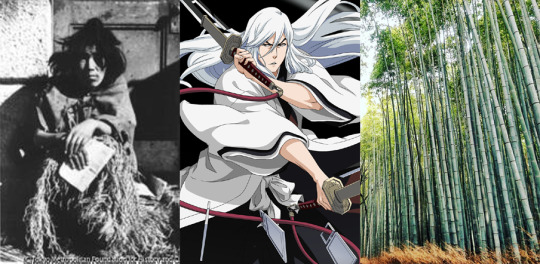
Ukitake[浮竹] Juushirou[十四郎] actually has one of my favorite names in the series as it feels like it says a lot about his core concept beyond what we're really given in canon. The family name reads uki-[浮]: "Floating" and take-[竹]: "Bamboo." That same "floating" is part of the word fuurou[浮浪]: "vagrant/vagabond" and a few other colloquial terms, a generally circling around a homeless person or a drifter. (In fact the other half of that compound word, [浪] is the "wave" in ronin[浪人]: "wave man/person" as in a masterless samurai.) Bamboo being a staple lumber in Japan of course but also notorious for its fast and rampant growth, as it is quick to spread and choke out other plants in an environment. The idea of "floating..." or "vagrant bamboo" gives an impression of being plentiful and common, even excessive.
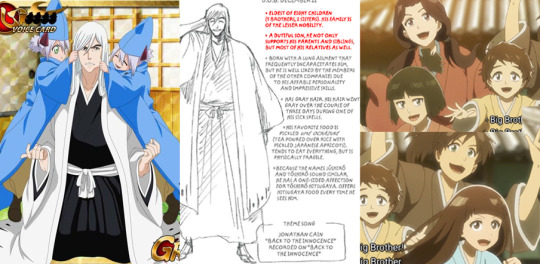
The personal name, Juushirou[十四郎] just reads "14(th) Son" which always implied he came from a large family. A profile in the back of vol. 18 long ago confirmed he had brothers and sisters, but curiously all younger than him. The implication seemed clear that as a sickly person from a big family, he was poor and that there were 13 prior children who died before him, which is really the only reason you'd name a child the way they did. This feels like it works in tandem with the family name to again emphasize a family of many, but also almost expendable. The big family is also why he's got an affinity for children
That said it always felt to me like the backstory should have been more grim? Like rather than just praying to a god to save his life, it seemed more like he should have been a sacrifice made to ensure the family line continued. Like first 13 kids died, they were afraid he was their last chance, but he was sickly, so they sacrificed him to basically ensure the next ones would come out alright. Hence the kids younger than him surviving in spite of the ominous past implied by his name.
(Also the "shiro" phonetics in his name as a homonym with shiro[白]:white point to his hair. Kubo makes an explicit joke about this as Toshiro, also white haired, shares a similar wordplay, his name Toshirou[冬獅郎] meaning "Winter Lion Son.")
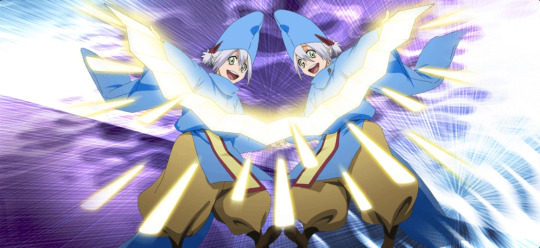
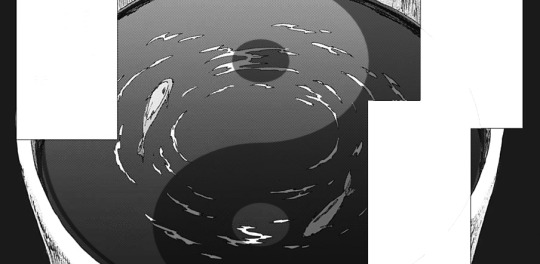
Then there's his shikai, Sougyo-no-Kotowari[双魚理] which reads "PairFish's Reason/Logic/Natural way of things." (sougyo-kyu[双魚宮] is the Japanese name of the constellation Pisces.) It appears to be an allusion to daoism/onmyodo, and the yin-yang diagram of balance, and this theme gets built upon by other contextual information like the zanpakutou arc's designs borrowing from onmyoji, and Ukitake's presence in conjunction with fish imagery and metaphor in the Jaws of Hell arc.
The little preamble to that chapter, about the two fish in balance until one dies and then the other grows bigger, is itself synonymous with sougyo-no-kotowari: The Natural Order of Two Fish.
The release command [波悉く我が盾となれ]: "All Waves be my shield," [雷悉く我が刃となれ]: "All LightningBolts be my blade" is fairly straight forward and just evokes the image of a stormy sea, which actually seems to have surprisingly little to do with the rest of the themes in play? I mean sure, waves and fish and floating, but when the floating and fish are less than literal the waves and lightning without any additional reading feel kind of out of place?
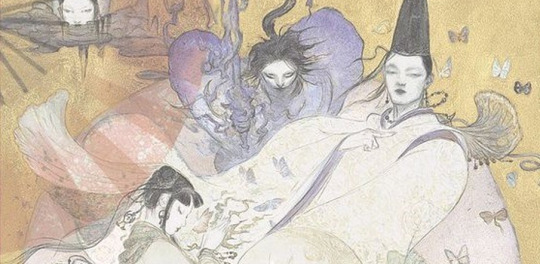
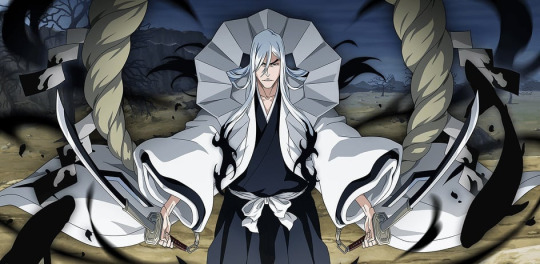
Of note: the onymoji was a prestigious class of sort of advisor in the japanese imperial court was at its peak in the Heian period, the long standing era of peace in ancient Japan that came just before the descent into the civil war of the Sengoku period. (Subsequently the onmyoji lost most of their power and clout during the waring states period as power shifted from the imperial court to the shogunate.) They were associated with and consulted for a wide range of things from medicine, to architecture, to city planning and meteorology, and divination, and perhaps most well loved by media, as exorcists. This ties into things like his beyond bankai form in Bleach Brave Souls where they opt for a more shinto purification theme, in either case making him fit something of a paragon role as Shinigami as ""cleansing"" hollows rather than destroying them.
Actually those shinto motifs all link to the recent addition of shinto themes in Mimihagi pretty directly, but I'll get to that in a bit...
It's worth noting that with Kyoraku's emphasis on a leisurely city life in the capital(Kyoto), and the onmyo mystic themes of Sougyo-no-kotowari, Kyoraku and Ukitake appear to both represent aspects of the Heian period, and thus cultures that predate the Sengoku period, and the rise of the samurai, lending to their role as two of the most senior members of the gotei 13.
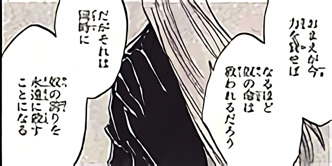
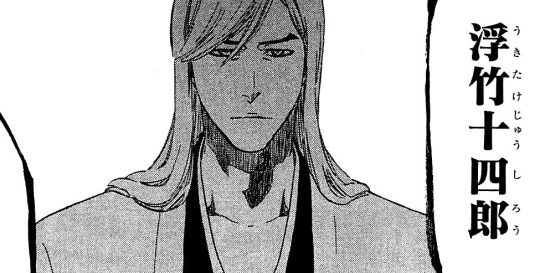
People often forget but technicaly Ukitake was the first captain we were introduced to, well before Byakuya showed up, the Captain title just wasn't present at the time. When Rukia has her flashback to a then uncertain event while Ichigo fights Grandfisher, it's Ukitake she's hearing speak and that we catch just a brief glimpse of the back of the head of. Like I said there were no captain ranks in the story a that point, so he just appears as long flowing white hair over an all black shihakusho. I think his hair was always meant to help him embody an element of balance between black and white, and thus the very series title: Bleach.
I think there was always an implicit siniste quality to the idea of "Balance" underlying the shinigami that Kubo tried to gesture towards with the general vibe of the Soul Society -v- Rukongai dynamics, the Shibas, that flicker of a twist in the Fullbringer arc that Ichigo just ignored, and even with a lot of the loose and ultimately unfulfilled themes he set up for the TYBW arc with Yhwach's plans for a new world and Juugram's Balance schrift.

Oh I forgot the whole MIMIHAGI bit, despite teh being the whole subject of this week's episode:
東流魂街七十六地区『逆骨』に伝わる単眼異形の土着神。
An indigenous God of Grotesque/Suspicious Single-eye passed down in East Rukongai 76(th) zone "Sakahone(Reverse Bone)"
太古の昔、天より瀞霊廷に落ちて来た霊王の右手を祀ったとされるもので、自らの持つ「眼」以外のすべてを捧げた者に加護をもたらすと言い伝えられている。
(In)Ancient Times, From Heaven to the Seireitei the fallen right hand of the Rei-Oh is said to have been enshrined.
浮竹の行った『神掛』は、体内に宿るミミハギ様の力を全身の臓腑へと広げる事で、全ての臓腑をミミハギ様に捧げ、その依り代になる儀式である。
Ukitake's performed "Kamikake(God debt)" was, the power of MIMIHAGI dwelling in the body spreading to the whole of the viscera/entrails, offer up all of your entrails to MIMIHAGI-sama, it is a ceremony/ritual to become a Yorishiro*
『神掛』を成功させた浮竹は、霊王の右腕そのものとなった。
Ukitake succeeded at/with "Kamikake", he had become the right hand of the Rei-Oh.
*i don't have a more concise way to translate this... the translation listed run something like "object representative of a divine spirit"/" object to which a spirit is drawn or summoned"/"object or animal occupied by a kami" and it's specifically a shinto thing.
When you see big deified trees with the shimenawa ropes and shide paper talismans, those trees are yorishiro. or rather they're Shintai, because a Yorishiro is a thing capable of being host to a kami, the Shintai is after they've been deified. (And technically when you do that to a person it would be called Yorimashi, not Yorishiro. I don't know if that's meant to specifically dehumanize Ukitake or if its a broad enough term that it doesnt really make a difference. Although if you really wanted to stretch it you could argue that Ukitake is an object and not a person because he did die from his illness and the thing deified wasn't a "living" person it was a corpse. Which would very curiously position him as an inversion of Ichigo, who was human, "died" in that his soul was deliberately severed from his body, but continued to operate as nominally human while getting to dip a toe into the shinigami powers and the spirit world.)
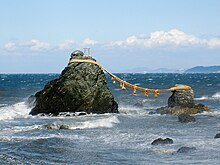
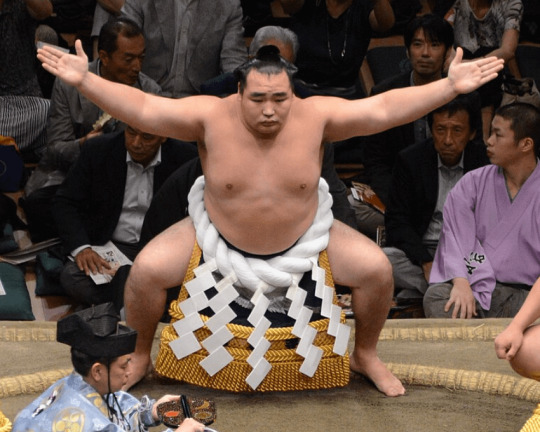

These little eye catch data cards really aren't giving us anything new huh?
#bleach#bleach meta#recap of junk i already posted years ago mostly#some of which i dont even know if id stand by today#but im too selfconcious to really reread my old shit#i know its bad#jushiro ukitake
55 notes
·
View notes
